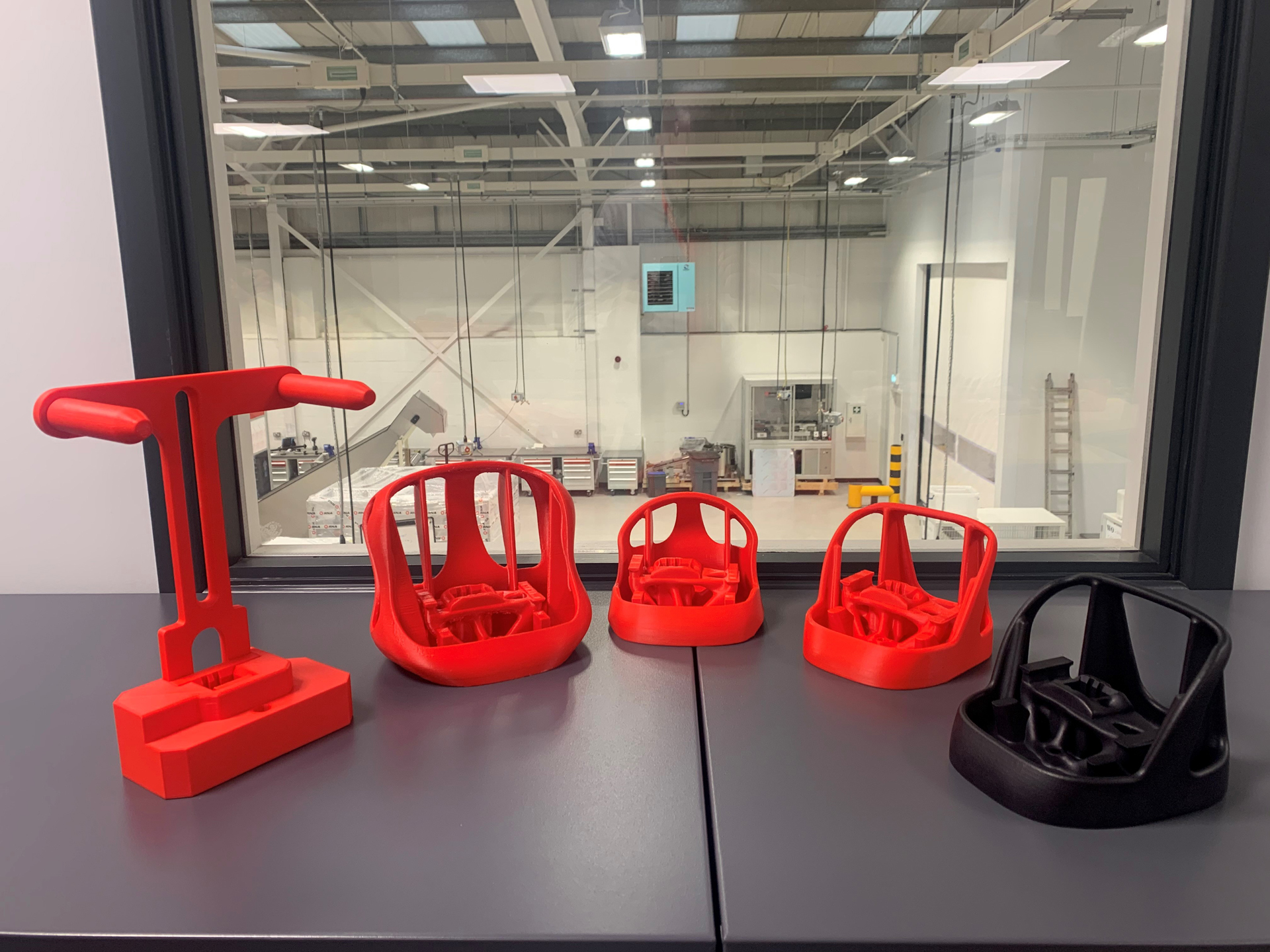
3D printing has been a capable technology for quite a number of years now, but the developments in machine technology and the extensive range of materials that have become available over the last 12 months or so, are really helping RNA to drive innovative ideas through the business.

One of the primary areas of application is in concept development; robot grippers being a fantastic example. The ability to generate a CAD concept in an afternoon, print sample parts overnight and have them on test on a robot the following morning dramatically changes the development cycle. Not only can we go through a number of iterations very quickly and at minimal cost, we can be bolder in the ideas that we put into physical testing as the risk is almost non-existent, which in turn leads to greater innovation and better performance for our customers.
An initial challenge associated with this development path was that printing grippers on a standard prototyping machine didn’t allow use of a suitable material or finish to the part. Furthermore, the form of what we had printed could often be very complex to achieve when conventionally machining from solid in a more appropriate material. Developments in different printing technologies and media have quite rapidly improved in recent years, and more often than not a multi jet fusion component printed in nylon is functionally more than capable and looks the part as well.
More recently we have also started to experiment with metal 3D printing, and on the aerospace project above the part was printed in 316 stainless before having critical locating features machined. This enabled us to harness a quick and expansive concept development cycle to refine the final design, while retaining the material selection demanded by the application and ensuring we also had the necessary precision where required for location and clamping. The end product is more thoroughly optimised for the application, and spares can be made readily available within a matter of days.
3D printing in metal is understandably bringing significant and interesting advantages to the industry, but part of optimising our use of the technology is keeping an open mind to opportunities to utilise it in ways we haven’t considered before.

The 3D printing activity on the above component nests was initially undertaken to check the fit of the interface between the part and the nest itself. The base of the original design was to be machined from aluminium with two hardened steel inserts, the back plate was to be a laser cut and the support rails to be turned from nylon. It wasn’t until we printed the test parts that we realised we were missing an opportunity to simplify the part and the manufacturing process and make it more functional at the same time.
One of the challenges with this project was that the interface hole in the nest would be blocked from the operator’s view by the component as they were loading it into the nest; effectively having to load it blind. As the component was interfacing with a robotic application during production the repeatability of its position was critical and therefore a close fit on the interface was vital. This would make the load operation even more difficult, which could potentially lead to a very frustrated operator and poor process output quality.

3D printing enabled us to integrate guide ribs into the frame, which drove the component to the locating hole in the nest with incredible ease, even without being able to see where the part was trying to locate. We also took the opportunity to embrace the alternative thought process that additive manufacturing demands, by considering where we wanted to add material for us to meet functional requirements rather than where we wanted to remove material from a solid billet.
This led to the use of topology optimisation software to brace the support faces to the mounting face of the nest, resulting in the highly organic form seen in the above image. This form has been optimised for the load case of the operator inserting the part at a given force and is designed to dissipate that force efficiently through the nest and avoid any breakage.

The finished product was highly successful in achieving a lower material cost, complete reduction of assembly labour as it was refined to a single piece, delivered ahead of schedule as manufacturing the batch of 50 nests only took 4 days, and it also gave the operator a product which was highly functional; far more so than would likely have been achieved by a conventional approach.
The machine is a pleasure to use rather than the pain it could have been, and any future requirements for spares can be satisfied at a very competitive cost and a lead time of a couple of days rather than what could potentially have been several weeks. It’s visually a very interesting nest as well, and really looks the part in production.
We’re probably not in a position to conceive where the limits of this technology will lie yet, but through continual development, investment in technology and application of innovative thought, the opportunities that additive manufacture will continue to give are very real and exciting.

Written by Phil Baker
Engineering Manager at RNA Automation
RNA Automation Ltd
Website: www.rnaautomation.com
Have a question? Join our community of pros to take part in the discussion! You'll also find all of our automation courses at TheAutomationSchool.com.
Sponsor and Advertise: Get your product or service in front of our 75K followers while also supporting independent automation journalism by sponsoring or advertising with us! Learn more in our Media Guide here, or contact us using this form.

Discover more from The Automation Blog
Subscribe to get the latest posts sent to your email.




